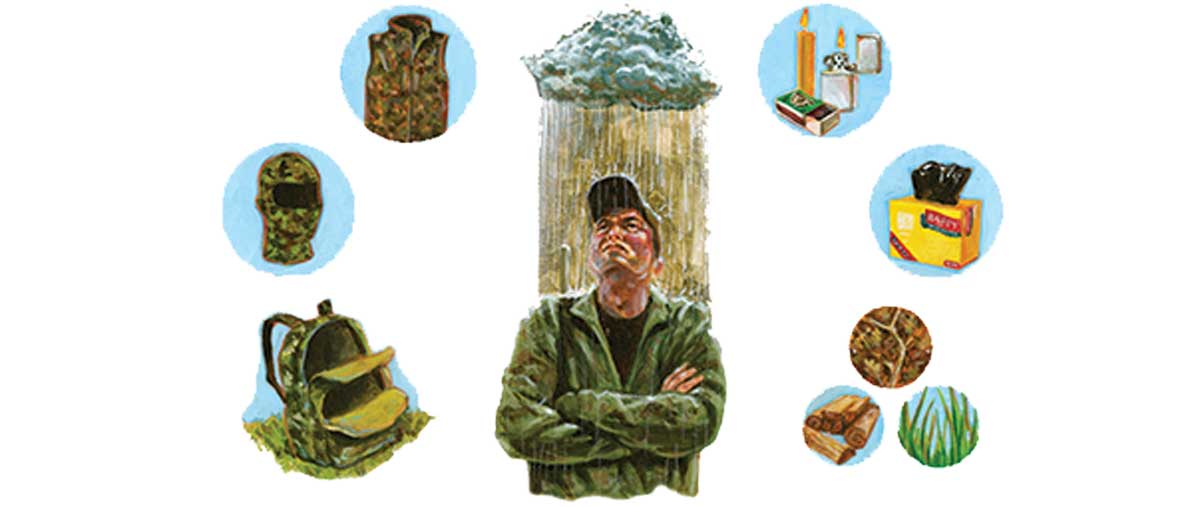A garbage bag and some common sense will give you shelter from the storm.
Consider this scenario: you are a long way from camp and get caught in a serious storm. You have a day pack that includes a fleece jacket and beanie, a lightweight poncho, lunch and a few odds and ends. Avoid the instinct to “tough it out” and hike to camp. You need to prevent getting soaked, cold and potentially hypothermic. Prioritize your actions and eliminate your exposure in these steps.
First, get yourself out of the weather. Move lower on the hill or into a saddle and find timber. If you are far enough above treeline that this isn’t possible, look for shelter behind large rocks on the leeward side of a ridge. Next, get overhead protection. If you are in timber, find the thickest pine tree around, crawl under the boughs at the bottom and scoot in toward the trunk. Break out the low branches and make enough room so you can sit up comfortably. Lay these branches on the ground and make a thick mat to sit on, which will protect you from ground moisture and heat loss through conduction. In rocks, you will have to find a crack, crevice or small cave to sit in. Any kind of brush will work for an insulation mat. This will be very important since rocks can suck the heat right out of you.
Next, insulate your body and put on the fleece jacket and beanie. I have found a windproof fleece vest and balaclava to be invaluable as survival tools; it preserves the heat of your core vitals and fits into any kind of hunting pack I use. If you don’t have insulating layers of clothing, you can improvise by stuffing dead and dry leaves, grass, sage or similar material between the layers of clothing you are wearing. Sure, you might look like a scarecrow, but the idea is to create a warm layer of air around your body. It works.
Last, you need to protect your warm layer of insulation and put on the poncho. Some might want to use the poncho to make a shelter or improve on the natural one you found. Not a bad idea if the poncho is strong enough to withstand being pulled tight across branches, having the weight of water or snow on it, and the force of wind. A $5 plastic poncho from the local sporting goods store won’t do this. It will be more useful as a shell to keep wind and precipitation off you. Some hunters carry heavy-duty lawn bags for packing meat, and these can easily become improvised ponchos by poking holes in the corners for your arms and one in the middle of the bottom seam for your head. Pull your knees up to your chest and hug them. This will conserve even more body heat.
At this point, you can sit out some pretty nasty squalls without much difficulty. A fire would add to your comfort and help dry you out, but be careful. Don’t light a fire under branches that are laden with snow, because the heat will bring buckets of slush crashing down on you. Instead, clear an area just outside the bottom branches of the tree and build it there as the storm subsides. There will be many small, dead branches under the boughs at the bottom of a pine tree and this is excellent fuel for a fire. Just don’t forget your matches.
